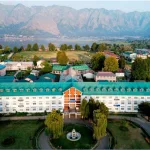American marketing Association while introducing the 21st century definition of marketing termed it as an organizational function that includes a set of processes for creating, communicating and delivering value to customers and for managing customer relationships that benefit both the organization and stakeholders. It must be said at the outset that marketing is anticipation, satisfaction and management of the demand through exchange process involving goods, services, organizations, people, places and ideas. Thus what should set the marketers on job in Jammu is to work out the measures to develop demand for the heritage assets and this is not difficult when the cultural properties are already present in substantial amount besides the religious aspect of heritage that is pilgrimage is already being practiced on a vast scale. The need is to set the marketing goals towards the heritage by employing the stimulation required to capture this virgin market. Potential driven and customer oriented being the focus of marketing makes it totally an innovation that should be based on the following aspects:
•Consumer oriented.
•Market driven approach.
•Goal orientation.
•Value based philosophy.
•Integrated mechanism.
Heritage tourism can use this paradigm to shape the strategies to evolve a product that has the touristic approach with market driven essence; eyes set on the goal of heritage tourism product. Its core philosophy is value based that blasts the myth that marketing is hype driven. In fact this philosophy stands true to the intrinsic values of the heritage. Integrated mechanism can be used to integrate the tourist, host and the asset in the conservation web so that violation of the intrinsic cultural is nipped the bud. Before devising the marketing strategies for promotion of heritage tourism in Jammu region, heritage marketers and mangers will have to ponder over the followings things to arrive at the desired outcome:
* Create the tourist focus throughout the market.
* Listen to tourists.
* Define and cultivate the distinctive competencies.
* Define marketing as heritage intelligence.
* Target heritage tourist precisely.
* Manage for profitability with focus on conservation.
* Make the heritage tourist the focus of policies.
* Let the tourist define quality in terms of conservation.
•Measure and manage customer expectation.
* Build customer relationship and loyalty.
* Define heritage as service product.
* Commit to continuous improvement and innovation.
• Manage the heritage paradigm with culture as the prime mover of strategy.
* Collaborate with heritage managers.
•Erase marketing bureaucracy.
Marketers have to be aware that while marketing the heritage product focus should be on integrated marketing and just on selling. It will commodify the product and lead to immense damage to the assets as heritage is not like others products that can be just based on supply and demand. In fact it has to be a two way track just like the complete communication model having staring and end point besides the proper mechanism for feedback; giving credence to input and output. Heritage tourism also needs the overall customer satisfaction but it has to be a case guided by the prior sensitization of the conservation issues.Before arriving at the marketing strategies total marketing effort has to be understood and fructified for the complete marketing success in terms of the conservation, preservation, stakeholder stakes, tourism business and the heritage managers issues. Again the heritage issue needs a sensitive handling after the product development or during the process of its evolution so that foundations are laid with enough vigour and vitality to withstand the pulls and pushes of this specialised areas.
Following marketing functions need to be borne in mind for this situation;
•Environmental analysis and marketing research for the cultural heritage.
•Broadening of the scope of the marketing to include both tangible and intangible aspects of heritage.
•Heritage tourist analysis.
•Distribution planning during the marketing phase.
•Heritage promotion and planning.
•Price planning.
•Marketing management.








